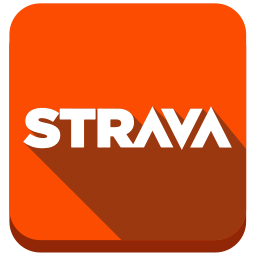RPV Club Ride Rules
Please show respect for your fellow riders and other road users by observing the following rules:
- General
- Ranking: You must have a ranking before you can participate in a Club Ride. To get a ranking, either attend one of the club’s “Meet the Members” lap sessions on a Saturday morning or submit your best lap time (best time for one lap of Richmond Park without drafting) to the Organiser.
- Punctuality: Arrive on time at the meeting point specified in the event details. The meeting time allows 10 minutes for introductions and briefing before the planned departure time. If you arrive at the intended departure time, you are already 10 minutes late and may be declined admission to the ride. Please do not send phone messages saying you are running late.
- Road bikes and tyre width: We are a road cycling club. Please do not sign up for a ride unless you have a bike with tyres no wider than 28mm. Hybrids and mountain bikes are not suitable for our club rides.
- Helmets: Helmets are compulsory. We reserve the right to refuse participation in a club ride to any rider not wearing a helmet.
- Club kit: You are expected to wear a club jersey or jacket on all club rides. Orders will generally be opened with the club’s kit provider three times a year typically in February and May for summer kit and August for autumn/winter kit.
- Aerobars: Please do not bring a bike with aerobars to a club ride. These are for individual time trial efforts and present a danger to others in group riding. Exceptions will only be made in relation to very experienced members who are leading a ride and are prepared to spend a lot of time at the head of the peloton.
- Headphones: The use of headphones while riding is strictly prohibited. Communication is important for everyone’s safety when riding in a group.
- Essentials: Always carry with you at least one spare inner tube, tyre levers, a multi-tool, a pump, water and a snack.
- Bike maintenance: Maintain your bike in a roadworthy condition so as to minimise stoppages on club rides.
- Highway Code: You must at all times comply with the Highway Code.
- Conduct: Behave with courtesy and respect for other road users. Do not insult other road users even if they are in the wrong.
- Safety: You must take care for your own safety by riding always at a speed that enables you to be in control of your bike. You must also take care for the safety of other riders and road users around you. Use the accepted cycling calls and signals to warn other riders of your intended manoeuvres and any potential hazards.
- Follow the instructions given to the group or to you personally by your ride leader before or during the ride.
- Calls and Signals
- Overtaking: Call out “Coming through on your right!” when overtaking other riders in the peloton or any other cyclist or horse-rider in the road. If you have a noisy free-hub, do not freewheel when passing a horse.
- Call “Car up!” when the road is narrow and a car is approaching head-on. Call “Car back!” when the road is narrow and a car is approaching from behind.
- Slowing down: Warn the riders behind you that you are going to slow down by giving the “patting the dog” sign or the stopping sign (see below).
- Stopping: Warn the riders behind you that you think you are going to have to stop by presenting a flat palm behind you. If you believe the riders at the rear of the peloton will not see your signal, raise your hand above your head.
- If you don’t have time to give the slow/stopping signals, shout “Slow/Stopping!”
- Moving to the right: warn the riders behind you that you are going to move to the right (eg .to avoid a parked car) by pointing to the right with your left hand behind your back.
- Man down: You share the responsibility for keeping the group together. Check behind you every few minutes and shout “Man down!” if the rider who was riding behind you has dropped back or has disappeared. If you hear a shout of “Man down!”, pass it on up the line so that it reaches the lead rider.
- Easy: Call “Easy!” if you want the lead rider to slow down.
- Pass up the peloton any calls given from the rear; pass back to the rear any calls or signals given at the front.
- Hazards: Point out potholes. If you don’t have time to point, shout “Hole!”.
- Direction: Give directional hand signals if you intend to change direction.
- Group riding
- Objective: The objective on a Club Ride is to ride together on the flats and to regroup after hills.
- Riding close: Aim to ride as close to the rear wheel of the rider in front as you feel comfortable doing taking into account the consistency and experience of the rider in front, your own experience and the road, weather and light conditions.
- Off-set: Off set your front wheel to the right or left of the rear wheel of the rider in front of you so that you have a chance of avoiding a collision in the event that the rider in front brakes or slows down suddenly.
- Do NOT ride off the front: If you take the front, place yourself immediately in front of the lead rider WITHOUT opening up a gap.If you leave a gap, you are giving no draft to the rider behind you and your effort is of no use to the group. A few seconds after taking the front, look behind to check that you have not left a gap behind you.
- Concertina effect: This is the stretching out or compression of the peloton due to the front rider accelerating or decelerating (as the case may be). (A) Do not take the front unless you are sure you can maintain the pace of the peloton. If you go to the front and lose speed quickly, you could cause a crash in the middle or rear of the peloton due to the concertina effect. Similarly, avoid braking hard when riding in a peloton. Instead, try to pull to the right or left to miss the rider in front. If you brake hard, someone further back in the peloton is likely to collide with the rider in front of them. They will not have time to brake due to the concertina effect. The longer the peloton, the more pronounced the effect. (B) Do not accelerate hard out of corners. The riders at the back of the peloton are still braking into the corner and will be dropped. Similarly, do not accelerate hard out of junctions. It takes the riders behind you several seconds to clip in and move off.
- Do not stay too long on the front: The idea of group cycling is to maintain a constant speed and ride efficiently. Keep your stint on the front short and maintain the speed. If your speed comes down, you are tiring and have already stayed too long on the front. When another rider takes over from you, they will put the speed back up and you will struggle. In the meantime, you have negatively impacted your group’s performance.
- When doing a stint at the front, try to maintain a steady line and a constant speed and cadence. Never stop pedalling for no good reason. If you need to slow down suddenly due to a hazard in the road, shout “Slow/Stopping” and try to pull to the right so that the rider behind does not run into you.
- Overlapping wheels: When drafting, do not ride so close to the rider in front that your front wheel overlaps with the rear wheel of the rider in front. If the rider in front slows down suddenly, one or both of you could have an accident, in which case riders behind could also crash and/or run over you.
- Changing the front: If you want to come off the front, either (a) give a flick with your right elbow so that a rider or riders can overtake you on your right or (b) peel off to the right (after first checking that the road is clear behind you) and let the peloton pass you on your left.
- If you want to do an “effort” on a particular segment, go to the front, give the “straight ahead” signal and hunker onto the drops before accelerating slowly. Ensure that at least one rider continues to draft you (otherwise you are being a prima donna!) and stop at the end of the segment to enable the riders to regroup.
- Don’t race: The Club Ride is a group ride, NOT a race. You will gain more respect by helping other members of your group than by dropping them. If you tire, you may want to call on your fellow riders to return the favour.
- Do not chase: Do not chase a rider or riders belonging to another club or another group of RPV if the combined number of the two groups will exceed eight or if doing so will cause riders to be dropped off the rear of the peloton in which you are riding.
- Single/double file: Take your lead from the first two riders in the peloton. Ride two abreast if the first two riders at the head of the peloton are doing so; single out if they do so. Call “Car back!” and single-out if a car behind you is trying to overtake.
- Drafting etiquette: If you’re are doing an “all out” effort on a segment and you’ve taken a tow from another rider, return the favour and enable that rider to draft you if you can take the front. The other rider will take a dim view of you if you try to drop him/race him over the last few yards of the segment when he has done all the work.
- Overtaking the peloton: (Except when taking the front) do NOT overtake the peloton:
- if there is no gap in the peloton for you to move into.
- If the lead rider has shouted “Slowing!” or “Stopping!” or has given the slowing down or stopping signal.
- if the lead rider is slowing down in order to compress the peloton. If you do so, you obscure the view of the lead rider as he looks back to monitor the rear of the peloton AND you send the wrong message to the riders at the rear (for whose benefit the peloton is being slowed) as they will assume you are going to the front to maintain the speed of the peloton AND you are likely to ride off the front, as the peloton is decelerating.
- Junctions: Don’t swarm around cars at traffic lights but imagine the group as one large vehicle and keep together. If you are at the front, accelerate slowly away from the junction to keep the group compact. It takes time for everyone to set-off and clip-in.
- Mechanicals: If someone punctures or has a mechanical, everyone is expected to stop and give assistance as required.
- Insurance
- Consider taking out insurance against liability for negligence causing damage or personal injury to other road users.
Happy and safe riding!
Richard
(Organiser)
Join Us On Facebook
For cycling news, views, photos and fun!
Join The Club On Strava
Compare your rides with other club members and friends.
Sign Up To Events on MeetUp
See all event details and RSVP.
Follow us on Instagram
See pics from our rides!
Get In Touch
Any queries or just to say hello.




